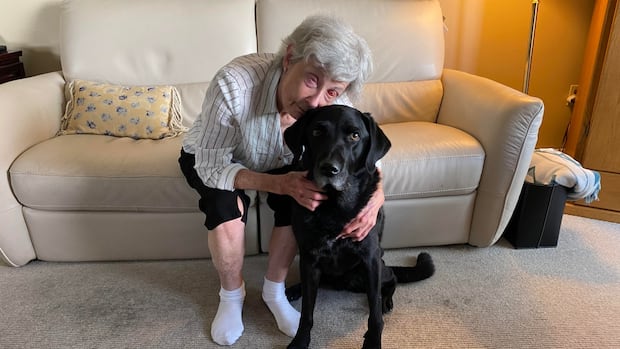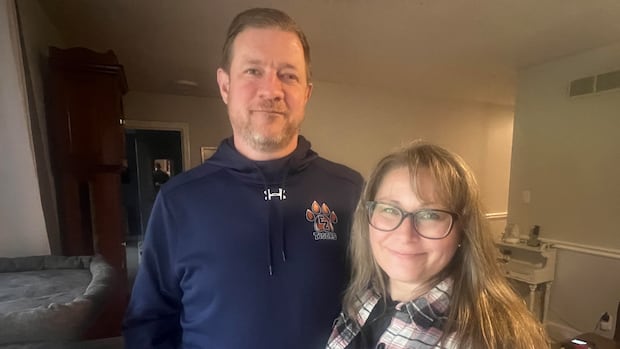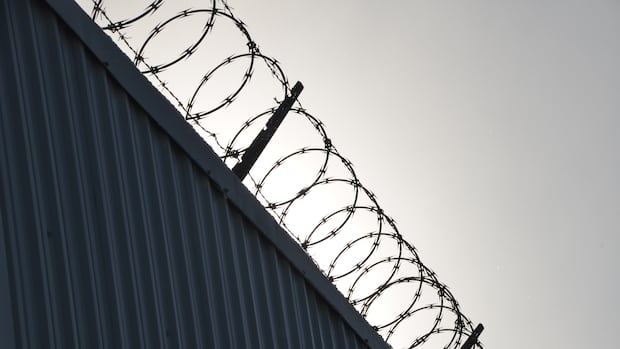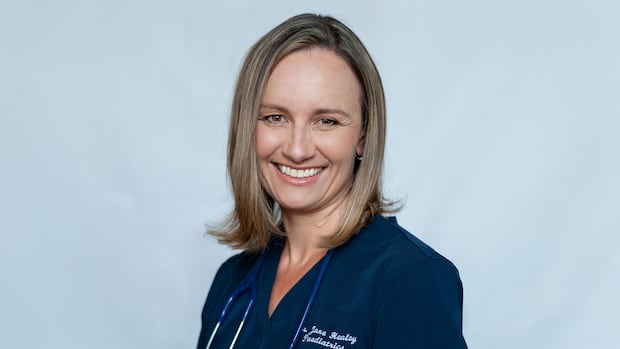After 10 years without sight, a Victoria, B.C., woman saw her partner’s face and her dog’s wagging tail this year for the very first time, thanks to a tooth surgically implanted into her eye socket.
Gail Lane, 75, was one of three Canadians to undergo the rare tooth-in-eye surgery, technically called osteo-odonto keratoprosthesis, in February.
Lane lost her sight ten years ago due to complications from an auto-immune disorder that caused scarring to her corneas.
In the weeks that followed the complex two-part surgery, she gradually regained her ability to see.
First, Lane said, she was able to see light. Then, she could see movement and the wagging tail of Piper, her partner’s service dog, became perceptible.
Eventually, Piper the black Labrador came into focus, as did bits of the world around her.
“I can see lots of colour and I can see outside now. The trees and the grass and flowers, it’s a wonderful feeling to be able to see some of those things again,” said Lane.
She met her partner Phil after she lost her sight, and had never seen his face before. Nearly six months after the tooth in eye surgery was completed, Lane saw him for the first time.
On The CoastCanada’s first tooth-in-eye surgery patient can see
Gail Lane was among the the first Canadians to undergo tooth-in-eye surgery to regain her vision. We check in with how phase two of that surgery went.
“I’m starting to see facial features on other people as well, which is also pretty exciting,” said Lane.
She hasn’t been able to see her own face in detail yet, but hopes that too will come with time — aided by a new pair of glasses that she will be receiving soon.
And Lane can now pick out her own outfits without help from a volunteer app service called Be My Eyes, which she had relied on to ensure her clothes matched.
First in Canada
While the surgery has been done in other parts of the world, ophthalmologist Dr. Greg Moloney from Vancouver’s Mount Saint Joseph Hospital was the first to bring the operation to Canada.
“It’s a complex and strange operation, but it basically involves replacing the cornea,” said Moloney.

He said the surgery begins by removing a tooth from the patient’s mouth. The tooth is then implanted into their cheek for several month, until it is encompassed in strong connective tissue.
Both the tooth and connective tissue are then removed, and a plastic focusing telescope or lens is inserted into it. Using the connective tissue as an anchor, the tooth and new lens are sutured into the patient’s eye socket.
“We need a structure that is strong enough to hold onto the plastic focusing telescope, but is not going to be rejected by the body,” Moloney explained.
Lane said the surgeries and recovery were uncomfortable but not painful.
“It’s been a long, it’s been a long wait, but well, well worth it.”
Lane said she is most excited to have her independence back.
“I’m hoping to have more mobility and independence in terms of short trips and walks here and there where I don’t always have to have someone’s arm for me to grab onto.”
“I’m just looking forward, really, to seeing what I can do or do again — and trying to just be patient and let my brain adjust a bit because that’s another big part of this.”







